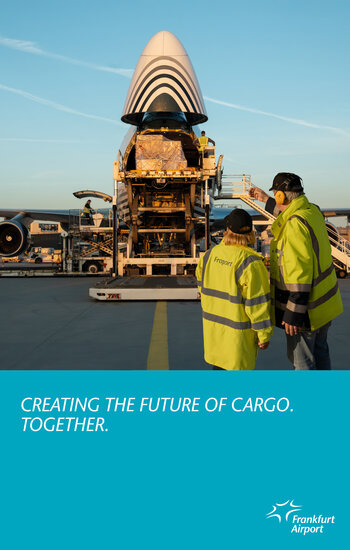A brighter future for Ostend-Bruges International Airport (OST)’s cargo business may be on the horizon, as part of a wider development scheme for the airport. A dedicated team of renowned air cargo veterans has been set up. CargoForwarder Global spoke with CEO, Nathan De Valck about the path forward.

In April last year, still under the leadership of Nathan De Valck’s predecessor, Eric Dumas, Rose Yiqian Qiu was brought in as Cargo Sales Director for Ostend-Bruges. “Rose was recruited because she not only speaks Chinese, but she also has a great knowledge of the Chinese market,” says Mr. De Valck, himself a veteran of the air cargo industry.
On 09OCT25, Johan Leunen joined the team as Cargo Development Director (please view article in Short Shots). He entered the air cargo industry in 2000 and retired on 01JAN25 as Senior Business & Development Manager with Brussels Airport Company.
Working with the team is another reputed name in the industry, Steven Verhasselt. He has taken the position of Cargo Strategy on the management level of the Egis Group, which owns 14 regional airports around the globe including the 2 Flemish airports of Ostend-Bruges and Antwerp.
Steven admits that this position did not exist on the group level. “My task will be to identify the cargo related opportunities of the airports controlled by the group and bring added value to the network,” he says. That may include flows between the various airports, he adds.
Potential routes include those between Europe and Africa, where Egis operates airports in Abidjan (Côte d’Ivoire), Pointe Noire, and Brazzaville (Democratic Republic of Congo). Egis is also present in Cayenne, the main airport serving the Ariane space project.
More than cargo
As for Ostend, cargo is one of the four business segments that Nathan De Valck would like to expand. Unlike Wallonia, which has separated Charleroi for passengers and Liège Airport for cargo, De Valck says Ostend-Bruges will not restrict itself to handling only cargo.
“We have a thriving passenger business with leisure airline TUI, for which we act as complementary to Brussels Airport. Secondly, we have a stable general and business aviation segment. Last September, we were able to attract the Maintenance, Repair and Overhaul (MRO) business of Dutch EASP Air.” (see here).
As for cargo, the airport boasts a completely renovated Apron 1 which has 6 freighter positions, the old warehouse formerly used by MK Airlines, as well as a brand new 16,000 m² facility built by local real estate group, Versluys. “In the long run, there is room for a fourfold expansion,” says the executive.
e-commerce and perishables
Last month, Ostend-Bruges concluded a collaboration agreement with
LeShuttle Freight, to set up a smooth line with the UK. “This allows your e-commerce to arrive at the London thresholds faster than through Heathrow,” Nathan De Valck is convinced.

Once upon a time, Ostend Airport as it was then called, reached a tonnage of some 150,000 tons. For this year, a mere 25,000 tons are expected, management expects. “But with the present infrastructure, the 150,000 tons should be possible. My predecessor decided to surf along with e-commerce growth. It is the main driver of the Belgian air cargo industry, which is larger than the Dutch, by the way. Thanks to my colleague Rose, we can work on this market.”
“For decades, we have had Egyptair as a reliable partner for perishables, and this is another segment we want to develop further. One of Johan [Leunen]’s task will be working on Africa and some specific routes ex China.”
“What we want to offer is a round-the-clock airport serving a specific product of speed through fast handling times. Today, we have only Aviapartner to rely on, but eventually we want to attract a second handler.”
For Ostend-Bruges International Airport, Nathan De Valck thinks of controlled growth, with speedy handling as a quality. He thinks of volume doubling every year. “From 25,000 to 50,000 tons is not a giant leap. It may be a 100% growth ratio, but in absolute figures it does not mean so much. We need a strong logistic chain, and we have the knowledge needed to achieve this aim at our disposal. We are not very big, so our lead times are short, and we have the space to grow.”




